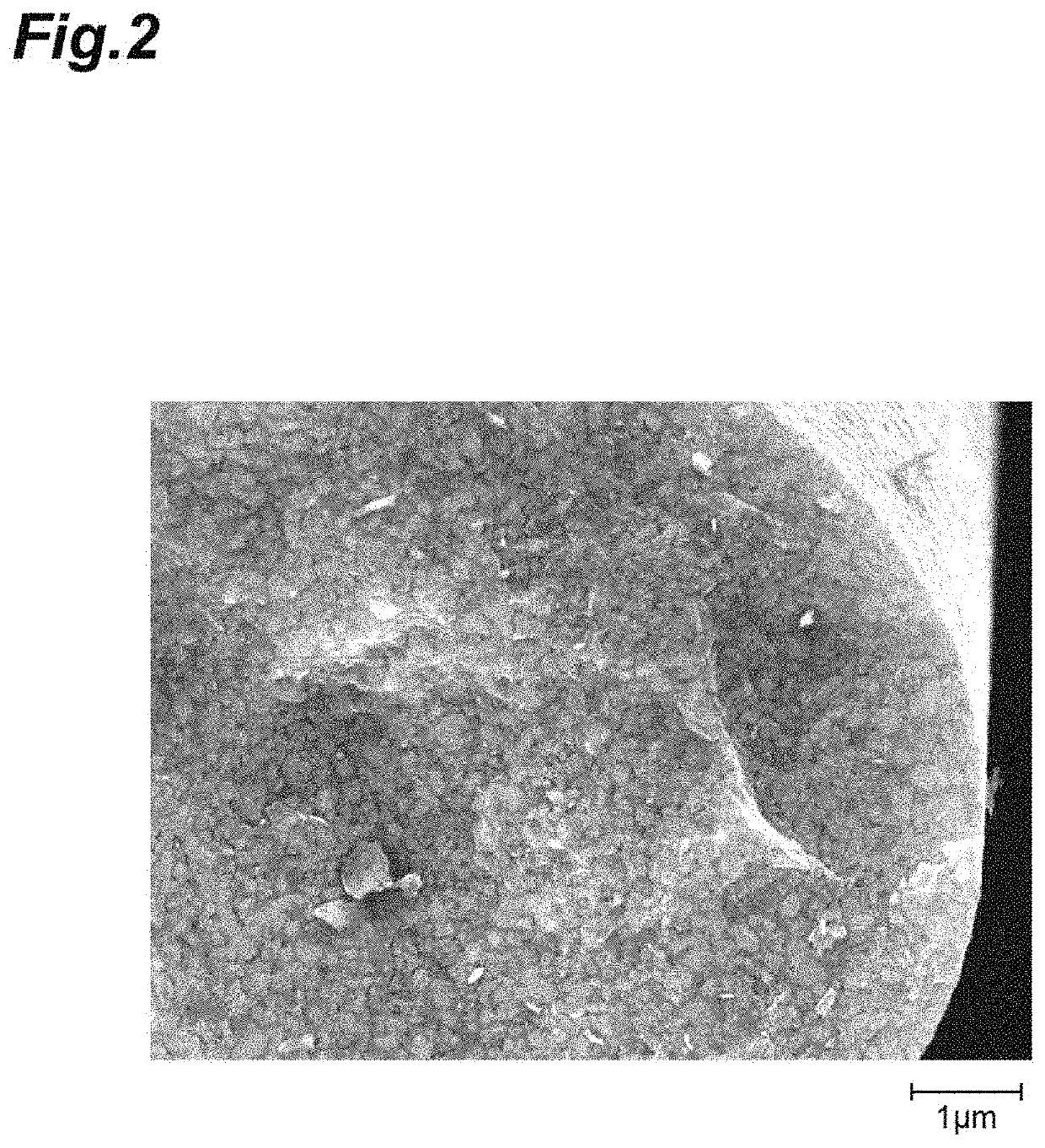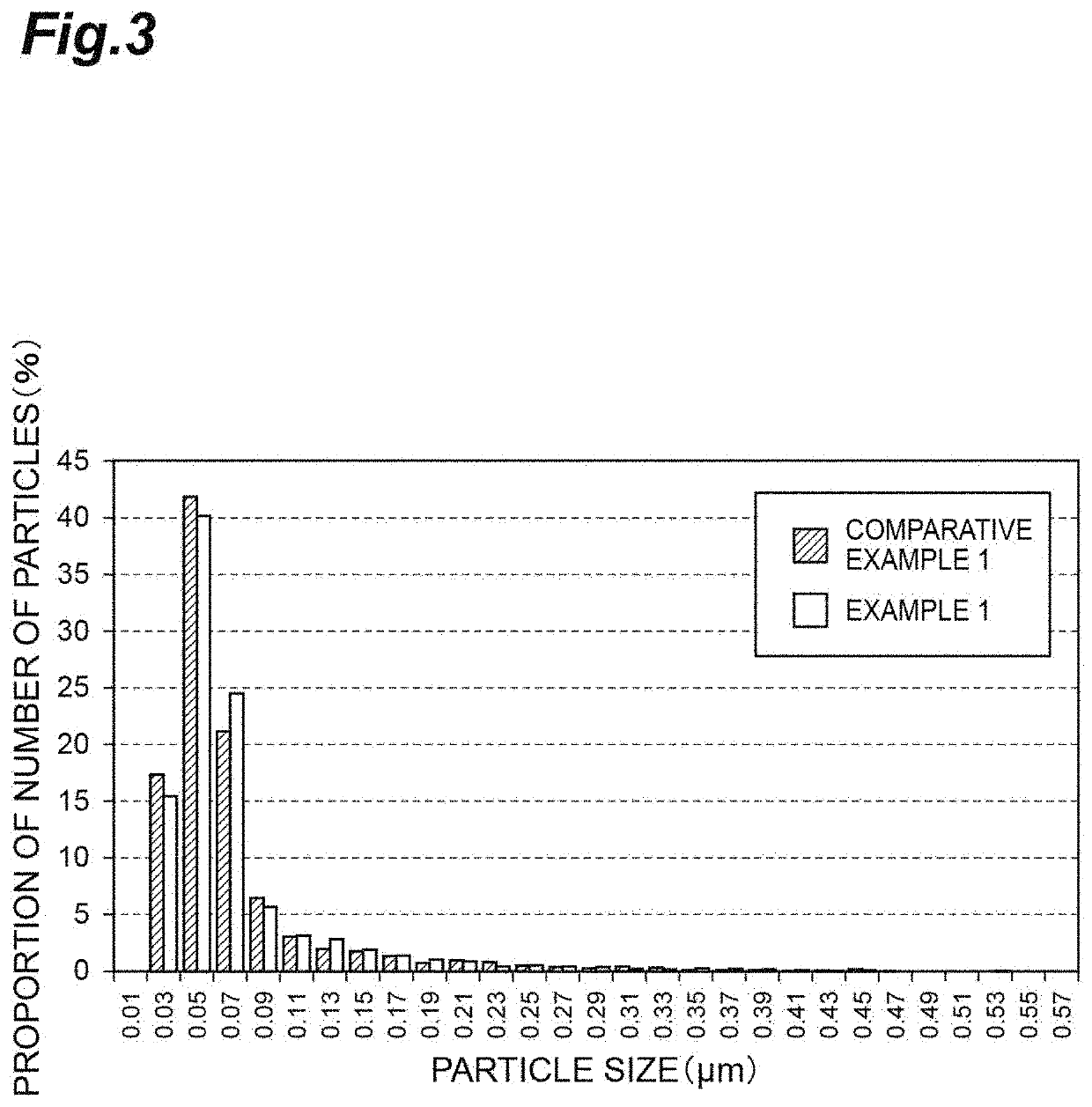Crystalline silicon carbide fiber and method for manufacturing same, and ceramic composite substrate
a technology of crystalline silicon carbide fiber and ceramic composite substrate, which is applied in the chemical features of fibres, melt spinning methods, textiles and papermaking, etc., can solve the problems of impaired alkali resistance at high temperatures, and achieve excellent tensile creep characteristics, and high tensile strength
- Summary
- Abstract
- Description
- Claims
- Application Information
AI Technical Summary
Benefits of technology
Problems solved by technology
Method used
Image
Examples
example 1
[0076]
[0077]A xylene solution was prepared by blending 1000 parts by weight of anhydrous xylene with 400 parts by weight of sodium. While this xylene solution was heated to reflux under a nitrogen gas stream, 1034 parts by weight of dimethyldichlorosilane was added dropwise into the xylene solution. After the dropwise addition, heating and refluxing was continued for 10 hours, and thereby a precipitate was generated. After this precipitate was filtered, the precipitate was sequentially washed with methanol and water. In this way, 420 parts by weight of white polydimethylsilane was obtained.
[0078]A mixed liquid was obtained by blending 750 parts of diphenyldichlorosilane and 124 parts of boric acid to 1000 parts by weight of n-butyl ether. This mixed liquid was heated to 100° C. to 120° C. in a nitrogen gas atmosphere, and a white resinous material was produced. This was filtered and then was heated for one hour at 400° C. in a vacuum. In this way, 530 parts by weight of phenyl group...
examples 2 to 4 , 6
Examples 2 to 4, 6, and 7
[0092]Crystalline silicon carbide fibers were prepared in the same manner as in Example 1, except that the blending amount of either one or both of the organoboron compound and the organometallic compound (organoaluminum compound) with respect to 100 parts by weight of polydimethylsilane was changed as shown in Table 2. Then, evaluation and analysis of the crystalline silicon carbide fibers were carried out in the same manner as in Example 1. The results were as shown in Table 2 and Table 3. In addition, in Table 2, the type of the metal element constituting the organometallic compound is described on the right-hand side of the column “Organometallic compound”. Furthermore, “M” in Table 3 represents the metal element in Table 2.
example 5
[0093]A crystalline silicon carbide fiber was prepared in the same manner as in Example 1, except that the heating temperature of the calcination step was set to 2200° C. Then, evaluation and analysis of the crystalline silicon carbide fiber were carried out in the same manner as in Example 1. The results were as shown in Table 2, Table 3, and Table 4.
PUM
| Property | Measurement | Unit |
|---|---|---|
| thickness | aaaaa | aaaaa |
| temperature | aaaaa | aaaaa |
| elastic modulus | aaaaa | aaaaa |
Abstract
Description
Claims
Application Information
 Login to View More
Login to View More - R&D
- Intellectual Property
- Life Sciences
- Materials
- Tech Scout
- Unparalleled Data Quality
- Higher Quality Content
- 60% Fewer Hallucinations
Browse by: Latest US Patents, China's latest patents, Technical Efficacy Thesaurus, Application Domain, Technology Topic, Popular Technical Reports.
© 2025 PatSnap. All rights reserved.Legal|Privacy policy|Modern Slavery Act Transparency Statement|Sitemap|About US| Contact US: help@patsnap.com



